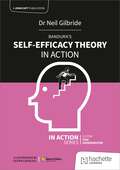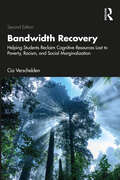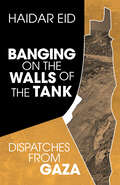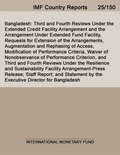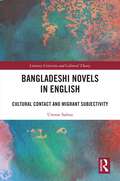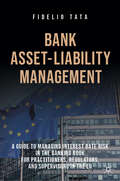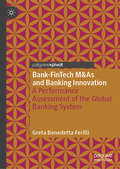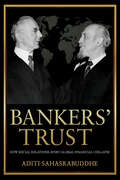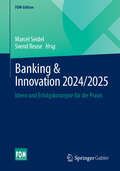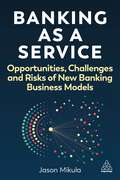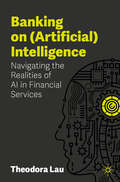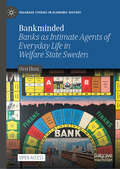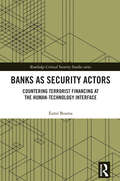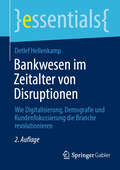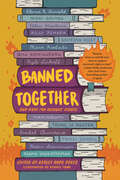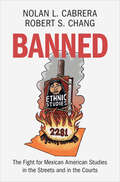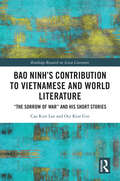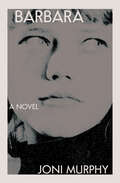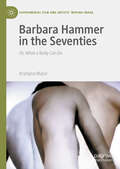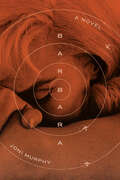- Table View
- List View
Bandura's Self-Efficacy Theory in Action
by Neil GilbrideBandura's theory of self-efficacy is one of the most important discoveries in modern psychology that has transformed how we understand human behaviour. Through years of research across different disciplines, we now know that our self-efficacy is a central concept in how we behave and is critical in determining the capacity that students have to shape their own lives. The belief that our behaviour can yield a positive result within a specific domain explains many experiences that teachers face in the classroom - why, in the face of good teaching, students still don't attempt the work; why, in some lessons, students are seen to work harder than in others; why some students struggle to bounce back from failure and why student behaviour can still present a challenge. Dr Neil Gilbride CPsychol guides the reader in how we can take action to raise student self-efficacy and, subsequently, the agency that students feel in taking control of their lives and studies. Specifically, the book will explore the application of self-efficacy to three key areas - how we design our instruction, how we design practice and how we influence the behaviour of our pupils within our settings. The book interweaves insights from research with how it might look in the classroom. Succinct summaries and case studies from a range of practitioners will enable all readers to raise the self-efficacy of their students in their own classrooms and beyond.
Bandura's Self-Efficacy Theory in Action
by Neil GilbrideBandura's theory of self-efficacy is one of the most important discoveries in modern psychology that has transformed how we understand human behaviour. Through years of research across different disciplines, we now know that our self-efficacy is a central concept in how we behave and is critical in determining the capacity that students have to shape their own lives. The belief that our behaviour can yield a positive result within a specific domain explains many experiences that teachers face in the classroom - why, in the face of good teaching, students still don't attempt the work; why, in some lessons, students are seen to work harder than in others; why some students struggle to bounce back from failure and why student behaviour can still present a challenge. Dr Neil Gilbride CPsychol guides the reader in how we can take action to raise student self-efficacy and, subsequently, the agency that students feel in taking control of their lives and studies. Specifically, the book will explore the application of self-efficacy to three key areas - how we design our instruction, how we design practice and how we influence the behaviour of our pupils within our settings. The book interweaves insights from research with how it might look in the classroom. Succinct summaries and case studies from a range of practitioners will enable all readers to raise the self-efficacy of their students in their own classrooms and beyond.
Bandwidth Recovery: Helping Students Reclaim Cognitive Resources Lost to Poverty, Racism, and Social Marginalization
by Cia VerscheldenBandwidth Recovery explores how students’ cognitive resources are diminished by persistent economic insecurity, childhood trauma, and marginalization, while offering strategies and interventions to help learners regain the bandwidth they need to succeed in college.When college students feel like they don’t belong – or are fearful, uncertain, or otherwise prevented from being their authentic selves – much of the mental bandwidth needed for learning is not available. When they are food insecure, financially unstable, or coping with the effects of childhood trauma, cognitive capacity is likewise diminished. Beginning with analysis of the most up-to-date research on the mental and physical impact of poverty, racism, and other forms of social marginalization, Cia Verschelden presents vetted approaches for promoting a growth mindset and self-efficacy in students. Readers will learn to develop supports that build upon students’ values and prior knowledge with the goal of creating a sense of belonging and community both in and out of the classroom. New to this edition are updated terminology and discussions of neurodiversity, childhood trauma, economic inequality, and the ongoing effects of the COVID pandemic.This book is intended for all higher education faculty, student affairs professionals, administrators, and scholars interested in creating learning environments where every student has the chance to succeed.
Banging on the Walls of the Tank: Dispatches from Gaza
by Haidar EidBanging on the Walls of the Tank is a collection of reflections and analysis written over eighteen years in Gaza by Palestinian academic and activist, Haidar Eid. Providing an insider’s perspective on the blockade of Gaza since 2007, the Israeli attacks in 2009, 2012, 2014, and 2021, the Great March of Return, and the ongoing genocide committed by the apartheid Israeli state, Eid’s essays examine political alternatives, opportunities for resistance, and prospects for a just peace after more than a century of dispossession.
Bangladesh: Third and Fourth Reviews Under the Extended Credit Facility Arrangement and the Arrangement Under Extended Fund Facility, Requests for Extension of the Arrangements, Augmentation and Rephasing of Access, Modification of Performance Criteria, Waiver of Nonobservance of Performance Criterion, and Third and Fourth Reviews Under the Resilience and Sustainability Facility Arrangement-Press Release; Staff Report; and Statement by the Executive Director for Bangladesh
by International Monetary Fund. Asia and Pacific DeptA report from the International Monetary Fund.
Bangladeshi Novels in English: Cultural Contact and Migrant Subjectivity (Literary Criticism and Cultural Theory)
by Umme SalmaBangladeshi Novels in English: Cultural Contact and Migrant Subjectivity is the first comprehensive study of Bangladeshi migration and diasporas through eight seminal Bangladeshi novels in English from the late twentieth and twenty-first centuries: Adib Khan’s Seasonal Adjustments and Spiral Road, Farhana H. Rahman’s The Eye of the Heart, Monica Ali’s Brick Lane, Manzu Islam’s Burrow, Nashid Kamal’s The Glass Bangles, Zia H. Rahman’s In the Light of What We Know, and Tahmima Anam’s The Bones of Grace. The book situates the study within the English-language literary history and linguistic ethnography of Bangladesh while unveiling the complexities of Bangladeshi Muslim migration from men, women, and children’s perspectives. It challenges the stereotyping of Bengali Muslim migrants as a failure of immigration and multiculturalism and offers a fresh view on cultural contact and the formation of migrant subjectivity at the intersections of gender, race, religion, class, culture, ethnicity, history, politics, and personality.
Bank Asset-Liability Management: A Guide to Managing Interest Rate Risk in the Banking Book for Practitioners, Regulators, and Supervisors in the EU
by Fidelio TataThis book provides a practical and intuitive view of how European banks manage asset-liability mismatch risk from both a practitioner and supervisory perspective. After a prolonged period of zero interest rate policy (ZIRP) by central banks around the world, the period from Q1 2022 to Q2 2023 has seen the largest, fastest, and most widespread increase in interest rates since the 1980s, with 1-year euro yields rising by more than 400 bp. The recent market turmoil has exposed the increased vulnerability of banks, particularly those with significant exposures to long-term, fixed income assets, fueled by shorter-term, less stable funding. This challenging interest rate environment reinforces the strategic importance of asset-liability management (ALM) for banks. Indeed, a bank's survival now depends more than ever on prudent ALM. This book introduces the most common components of interest rate risk management within a bank's asset-liability management framework, including the concepts of economic value of equity (EVE), net interest income (NII), funds transfer pricing (FTP), and the replicating model. In addition to bridging the gap between widely used general interest rate risk management techniques in the fixed income area and what is best practice in European banks, the book also provides an update on recent changes in the regulatory framework for European banks' management of interest rate risk in the banking book (IRRBB), including new EBA guidelines. It also covers the latest developments in interest rate risk management, such as rapidly changing interest rates and modeling bank customers' behavior.
Bank-FinTech M&As and Banking Innovation: A Performance Assessment of the Global Banking System (Palgrave Macmillan Studies in Banking and Financial Institutions)
by Greta Benedetta FerilliThis book examines the banking innovation and performance improvements arising from Bank-FinTech M&As. It explores the trends and characteristics of M&A operations in the banking industry, with a focus on the threats and opportunities that arise from a bank’s equity investments in FinTech firms and the impact on their performance. It offers a holistic assessment of bank performance metrics, such as profitability, operational efficiency, riskiness, and Environmental, Social, and Governance (ESG) score. Furthermore, the book presents novel and valuable analytical perspectives by analysing the role played by business models on these performance metrics following the M&A operations. The book supports strategic decision-making processes for banking practitioners while providing new policy implications for regulators and banking supervisory authorities. Finally, the book will be of interest to researchers and students in finance and digital innovation in banking.
Bankers' Trust: How Social Relations Avert Global Financial Collapse (Cornell Studies in Money)
by Aditi SahasrabuddheIn Bankers' Trust, Aditi Sahasrabuddhe reveals a crucial element behind the resolution of global financial crises: trust between central bank leaders. Central bank cooperation during global financial crises has been anything but consistent. While some crises are arrested with extensive cooperation, others are left to spiral. Going beyond explanations based on state power, interests, or resources, Sahasrabuddhe argues that central bank cooperation—or the lack thereof—often boils down to ties of trust, familiarity, and goodwill between bank leaders. These personal relations influence the likelihood of access to ad hoc, bilateral arrangements with more favorable terms. Drawing on archival evidence and elite interviews, Sahasrabuddhe uncovers just how critical interpersonal trust between central bankers has been in managing global financial crises. She tracks the emergence of such relationships in the interwar 1920s, how they helped prop up the Bretton Woods system in the 1960s, and how they prevented the 2008 global financial crisis from turning into another Great Depression. When traditional signals of credibility fell short during these periods of crisis and uncertainty, established ties of trust between central bank leaders mediated risk calculations, alleviated concerns, and helped innovate less costly solutions.Sahasrabuddhe challenges the idea that central banking is purely apolitical and technocratic. She pinpoints the unique transnational power central bank leaders hold as unelected figures who nonetheless play key roles in managing states' economies. By calling attention to the influence personal relationships can have on whether countries sink or swim during crises, Bankers' Trust asks us to reconsider the transparency and democratic accountability of global financial governance today.
Banking & Innovation 2024/2025: Ideen und Erfolgskonzepte für die Praxis (FOM-Edition)
by Marcel Seidel Svend ReuseDie Banking- und Finance-Szene sieht sich national wie international unablässig neuen Herausforderungen gegenüber. Um diesen Herausforderungen gerecht zu werden, zeigen Innovationsexpertinnen und -experten aus Wissenschaft und Praxis in der Buchreihe „Banking & Innovation“ strategische, organisatorische, kulturelle und methodische Problemlösungen für die Bankbranche auf. Diese Lösungen sind zum Teil bankenspezifisch, zum Teil wurden sie aus anderen Branchen auf den Bankenbereich übertragen. Führungskräfte sowie Entscheiderinnen und Entscheider in der Finanzbranche, die kreativ und langfristig denken und handeln, erhalten hier wertvolle Anregungen. Dieser Band enthält 29 Beiträge, die sich mit neuen Ideen einer strategischen Ausrichtung, mit kulturell-personalwirtschaftlich orientierten Themen, technischen und methodischen Vorgehensweisen sowie rechtlichen Herausforderungen im Banking beschäftigen. Die Ausgabe 2024/2025 deckt ein breites Spektrum aktueller Chancen und Innovationen, u. a. durch Künstliche Intelligenz und Nachhaltigkeitsstrategien, im Bankwesen ab.
Banking as a Service: Opportunities, Challenges, and Risks of New Banking Business Models
by Jason MikulaThis book provides a comprehensive look at banking-as-a-service (Baas), equipping readers with an understanding of the origins, evolution, future and applications of BaaS and the key differences across global markets.BaaS is a game changer in the financial services sector, radically transforming both how consumers experience financial products and the business models delivering them. Banking as a Service cuts through the hype to provide a measured overview of BaaS, helping readers to demystify a complex evolving field and understand its key opportunities, challenges and risks. It provides a framework for understanding where BaaS came from, how BaaS changes the economics and business models of banking products and services, its impact on key stakeholders, and its key regulatory implications. Banking as a Service explains how business and operating models work, exploring different models such as interchange, deposit gathering, loan origination-to-distribute, legacy, API-first, own licence, match-making and bank service providers and offers a framework for thinking about whether or not they're sustainable. It explores how BaaS operating and business models compare in different global territories and is supported by real-world examples and cases profiling organizations such as Blue Ridge Bank, Unit, Synapse, Goldman Sachs, Railsr, Starling, Solaris, Cacao Paycard, QNB, OnePipe, Airwallex, Nium and Pomelo. It also explains the differences between BaaS, embedded finance and open banking.
Banking on (Artificial) Intelligence: Navigating the Realities of AI in Financial Services
by Theodora LauThere is no lack of hype around artificial intelligence. We have only begun to scratch the surface of what this powerful technology can do. While tech and financial services become more intertwined, cutting through the noise has become more difficult but also more crucial. As a technology, AI is essential to advancing innovation, to creating efficiencies, and enhancing productivity while capturing opportunities by both incumbent financial institutions as well as fintechs. But it also comes with risks and potential for biases and disinformation, that can deepen inequalities and erode trust in our society. Responsible innovation must become part of our DNA and not as an afterthought. This book provides a tailored overview of what AI specifically means for financial services, a highly regulated yet also disrupted industry. It investigates the current state of AI applications in financial services today along with the state of funding and partnerships between tech and banking industries. It also examines the key pillars of responsible AI and the importance of keeping humans in the loop. The book takes a deep dive into the use cases in the financial services industry, the challenges and opportunities, and the fragmented regulatory landscape. How can we effectively assess risks, and balance innovation and customer centricity with trust in AI in financial services? Can smaller organizations reap the benefits of the technology? How can institutions deploy AI responsibly and securely, and promote a fairer and more equitable future for more people? While data is about bits and bytes, the realities of AI is very much human. This book will help spark dialogue and collaboration as we journey into the future.
Banking on Cities: Investing in Resilient and Low-Carbon Urbanization (Urban Development)
by Khan Chandan Deuskar Sally Murray Juan Sebastian Leiva MolanoCities around the world are responsible for ever-growing shares of people, assets, and economic activities vulnerable to climate disasters. They are also responsible for the majority of the world’s carbon emissions. Cities in low- and middle-income countries still have a window of opportunity to grow in resilient and low-carbon ways, to protect their populations and build strong and sustainable economic foundations. What are the resilient and low-carbon investments that these cities could make in the coming decades? How much will these investments cost, and where can cities look for resources to pay for these investments? These are the questions that 'Banking on Cities: Investing in Resilient and Low-Carbon Urbanization' considers. The publication provides the most comprehensive and up-to-date assessment of key resilient and low-carbon investment costs in major urban sectors in all low- and middle-income countries to 2050. These include investments in urban transportation, energy-efficient buildings, solid waste management, water and wastewater, flood protection, and heat resilience. The estimated total cost of these investments revealed by this analysis is sobering: between US$256 and US$821 billion per year. However, 'climate' investments are not a separate category of investments that cities need to make in addition to their regular investments. These are core urban investments that cities need to make for their local economic and social benefits in addition to their climate benefits. 'Banking on Cities' advances the discussion on urban climate finance by exploring how cities can identify sources of funding and finance that are suited to different types of resilient and low-carbon urban investments. Just as climate investments are not a separate category of investments, climate finance is not necessarily a separate category of finance. While climate-specific sources, including carbon markets, green bonds, and others, are part of the picture, making these investments will require cities to address their financial fundamentals, including revenues, transfers, creditworthiness, and fiscal efficiency. This report will be a helpful guide for cities and national governments as they develop their urban investment strategies.
Bankminded: Banks as Intimate Agents of Everyday Life in Welfare State Sweden (Palgrave Studies in Economic History)
by Orsi HuszThis open access book explores the history of how banks and banking services have become part of everyday life. Taking welfare state Sweden as its setting, the book identifies key cultural challenges and shows how banks and finance companies made inroads into the workplace, the family, spaces of consumption and the world of social movements while also taking on tasks typically associated with state authorities. Focusing on this ‘bankification of everyday life’ reveals the historical links between the post-war welfare state and the financialised everyday culture of the late twentieth century. This book will be of interest to scholars of economic and cultural history and sociology, as well as those interested in the history of welfare states and the development of commercial surveillance.
Banks as Security Actors: Countering Terrorist Financing at the Human-Technology Interface (Routledge Critical Security Studies)
by Esmé BosmaThis book analyses how banks implement counter-terrorist financing measures and experiment with technologies to assess risks and make security decisions.Banks have become private security actors. As “gatekeepers” of the financial system, they are legally obliged to conduct customer research and monitor bank accounts for unusual or suspicious transactions. Given the sheer volume of financial transactions that banks process daily, detection of financial crime heavily relies on digital security technologies that help analysts categorise and identify risky customers and financial transactions. Drawing from theories at the intersection of International Relations and Science and Technology Studies, the book advances the concept of ‘de-scription’ to offer a framework for analysing experimentation with security and digital technologies in practice. The research is based on fieldwork conducted in the financial crime sector in the Netherlands and the United Kingdom. It explores how political and ethical choices materialise at the human-technology interface and analyses the production of customer risk profiles, the design and use of transaction monitoring systems, and the emergence of public-private partnerships to counter terrorist financing.This book will be of interest to students and researchers in International Relations, Science and Technology Studies, and Critical Security Studies.
Bankwesen im Zeitalter von Disruptionen: Wie Digitalisierung, Demografie und Kundenfokussierung die Branche revolutionieren (essentials)
by Detlef HellenkampDigitalisierung, demografischer Wandel und ein sich wiederkehrend verändertes Kundenverhalten stellen das Bankwesen vor Herausforderungen, die es bisher in dieser Form noch nicht gegeben hat. Dieses essential betrachtet neben den wesentlichen Herausforderungen auch die Möglichkeiten, die diese Veränderungen mit sich bringen. Es soll dazu beitragen, sie zu verstehen und Anregungen sowie Strategien zur Anpassung im Bankwesen kritisch zu diskutieren.
Banned Together: Our Fight for Readers' Rights
by Edited by Ashley Hope Pérez; illustrated by Debbie FongA dazzling YA anthology that spotlights the transformative power of books while equipping teens to fight for the freedom to read, featuring the voices of 15 diverse, award-winning authors and illustrators.Books are disappearing from shelves across the country. What does this mean for authors, illustrators, and—most crucially—for young readers? This bold collection of fiction, memoir, poetry, graphic narratives, essays, and other genres explores book bans through various lenses, and empowers teens to fight back. From moving personal accounts to clever comebacks aimed at censorship, fifteen legendary YA authors and illustrators confront the high-stakes question of what is lost when books are kept from teens. Contributors include Elana K. Arnold, Nikki Grimes, Ellen Hopkins, Kelly Jensen, Brendan Kiely, Maia Kobabe, Bill Konigsberg, Kyle Lukoff, MariNaomi, Trung Lê Nguyễn, Ashley Hope Pérez, Isabel Quintero, Traci Sorell, Robin Stevenson, and Padma Venkatraman; the collection is a star-studded must-read that packs strength and power into every last word. Striking illustrations from Ignatz-nominated artist Debbie Fong pair perfectly with the searing, impactful narrative. Resources include tips from the Vandegrift Banned Book Club and other teen activists, as well as extensive recommended book lists, a How to Start Your Own Little Free Library flier, and more.
Banned: The Fight for Mexican American Studies in the Streets and in the Courts
by Nolan L. Cabrera Robert S. ChangIn Banned, readers are taken on a journey through the intense racial politics surrounding the banning of Mexican American Studies in Tucson, Arizona. This book details the state-sponsored racism that led to the elimination of this highly successful program, and the grassroots and legal resistance that followed. Through extensive research and firsthand narratives, readers will gain a deep understanding of the controversy surrounding this historic case. The legal challenge successfully overturned the Arizona law and became a central symbol in the modern-day Ethnic Studies renaissance. This work is a must-read for anyone interested in understanding the power of community activism, the importance of fighting for educational equity, and why the example of Tucson created an alternative blueprint for how we can challenge states that are currently banning critical race theory.
Bansuri - Textbook of Arts class 4 - NCERT-25
by National Council of Educational Research and TrainingBansuri: Textbook of Arts for Grade 4 is an engaging and interdisciplinary arts education textbook that introduces students to Visual Arts, Music, Theatre, and Dance through interactive activities and a unifying narrative based on the Panchatantra story "The Hare and the Lion." Aligned with the National Education Policy 2020 and the NCF-SE 2023, the book encourages creativity, self-expression, collaboration, and cultural appreciation. Designed with a hands-on, story-based approach, it nurtures students’ imagination and emotional intelligence while fostering critical thinking and inclusivity in a joyful, pressure-free learning environment.
Bansuri class 4 - NCERT - 25: बाँसुरी ४थीं कक्षा - एनसीईआरटी - २५
by Rashtriy Shaikshik Anusandhan Aur Prashikshan Parishadकक्षा 4 की हिंदी पाठ्यपुस्तक बाँसुरी राष्ट्रीय शिक्षा नीति 2020 और राष्ट्रीय पाठ्यचर्या रूपरेखा 2023 के अनुसार तैयार की गई है। इस पुस्तक में विद्यार्थियों की भाषा दक्षता, कल्पनाशक्ति, संवेदनशीलता और नैतिक मूल्यों के विकास पर विशेष ध्यान दिया गया है। इसमें कविता, कहानी, संस्मरण, संवाद और लोककथाओं के माध्यम से भाषा सीखने की प्रक्रिया को रोचक और आनंदमय बनाया गया है। बालसुलभ कथाओं और प्रसंगों द्वारा विद्यार्थियों में पर्यावरण चेतना, सहयोग, अनुशासन, परिश्रम और मानवीय मूल्यों की भावना जाग्रत की गई है। साथ ही, इसमें विभिन्न अभ्यास, प्रश्नोत्तरी, समूहगत गतिविधियाँ और सृजनात्मक कार्य दिए गए हैं, जिनसे बच्चों की पठन, लेखन और मौखिक अभिव्यक्ति की क्षमता बढ़ती है। बहुभाषिक और बहुसांस्कृतिक दृष्टिकोण अपनाकर यह पुस्तक बच्चों को भारतीय समाज, संस्कृति और परंपराओं से जोड़ती है। इस प्रकार बाँसुरी विद्यार्थियों के सर्वांगीण विकास और आनंदपूर्ण अधिगम का माध्यम बनती है।
Bao Ninh's Contribution to Vietnamese and World Literature: "The Sorrow of War" and his Short Stories (Routledge Research on Asian Literature)
by Cao Kim Lan Ooi GinBao Ninh's Contribution to Vietnamese and World Literature analyzes and presents the works of Bao Ninh, the most well-known writer in modern Vietnamese literature. His works are renowned both in Vietnam and worldwide and his novel The Sorrow of War, which has been translated into more than 15 languages, is considered to be one of the classic works of war literature.This book by two award-winning scholars, one in war literature and the other in war history, presents for the first time an overall assessment of Bao Ninh’s works, notably of his celebrated novel and his short stories. It outlines his life, setting it in the context of war-torn Vietnam whence he was a teenage soldier at the age of 17 in the North Vietnamese People's Army (NVPA); highlights the main themes of the corpus of his writings, inter alia of suffering and trauma of war impacts of post-traumatic stress disorder (PTSD) of veterans, of the futility of war; discusses his approach to writing; compares his writings with others in war literature; and examines and assesses his especial place in world literature. This pioneering monograph of the scholarly evaluation of Bao Ninh himself and his works further engages in the discourse of his contribution to modern Vietnamese literature and world literature. Encouraging a better understanding of wars and conflicts, the book will be of interest to researchers and students in the fields of modern Asian history, in particular the Vietnam War, Southeast Asian Studies, and Vietnamese and World literature.
Barbara
by Joni MurphyFrom the author of Double Teenage and Talking Animals comes an intimate portrait of a woman losing and finding her identity through the business and art of moviemaking.Barbara is born just before World War II to a tragically beautiful mother and a father who becomes an engineer in the famous Manhattan Project. When Barbara is thirteen, her mother dies by suicide. These realities of war and personal loss shape her consciousness going forward.She grows up to become an actress, restlessly travelling the world between film sets and love affairs, from the Bronx to Athens, the Alps to the Rocky Mountains. Navigating decades and genres, Barbara moves from austere 1950s kitchen sink dramas to countercultural 1970s gothics. She takes on and sheds many roles, temporarily becoming a vampire's victim and a stylish mistress, a martyred saint and a bored housewife. She enjoys clandestine sexual encounters and endures an illegal abortion; she marries, divorces, and remarries, the second time to a visionary director who proves to be her great love. ?An intense, layered distillation of a zeitgeist, Murphy's latest novel whispers tales of independent cinema and grimy show business, militarism and physics, bomb making and image consumption. It is a study of the mirroring and splitting between old and new worlds, inner sensations, and outward performance. Ultimately, Barbara unspools a delicate yet propulsive tale of a woman grasping for a meaningful life amid the reflective, broken shards of the long 20th century.
Barbara Bray, A Woman of Letters: Translator, Radio Producer, Scriptwriter, Critic, and Theatre Director (Routledge Research in Women's Literature)
by Pascale SardinBarbara Bray (1924-2010) was an English woman of letters who translated some hundred novels, plays, and essays from French to English and was Marguerite Duras’s preferred translator. She also collaborated with some of the most prestigious directors and playwrights of the 20th century – Harold Pinter, Samuel Beckett, Joseph Losey, and Franco Zeffirelli – helping them write screenplays and radioplays. This literary biography (re)evaluates in a textual, sociological, and historical perspective the social role of an English writer and translator in the history of ideas and contemporary art. Highlighting Bray’s influence in cultural transfers of ideas and literatures between France, Great Britain, and the United States, it renders visible the yet unrecognised work of a female mediator and creator. It nourishes the debate about women’s public voice and the representation of women in the media industries and contributes to enrich the ‘other’ history that is being currently written by feminist scholars around the world.
Barbara Hammer in the Seventies: Or, What a Body Can Do (Experimental Film and Artists’ Moving Image)
by Krystyna MazurBarbara Hammer in the Seventies: Or, What a Body Can Do addresses the intersection of experimental film, lesbian sexuality, and the women’s movement in Hammer’s early films. Grounded in an embodied, sexual, and gendered positionality, these films interrogate the politics of visibility and identity and perform a discontinuous repertoire of lesbian images that resist the medium of film’s established constraints and the decade’s broader systems of signification. Hammer’s films offer a critique of the dominant discourse that privileges the discreteness and self-sufficiency of the individualistic human subject. By performing the (lesbian) body in its ‘environment’—in erotic and communal relation to other bodies—and staging the relation of human bodies with the materiality of non-human beings and objects, they create a site of intervention into the humanist project, as it informs film studies, feminism, and queer theory. This rereading of Hammer’s work offers an important contribution to conversations between feminism and queer studies. In remembering the feminist origins of queer studies, it recenters political and ethical questions such as the fundamental relationality of the subject, the subject’s dependency on others, and the resulting ethical responsibility for and towards the other.
Barbara: A Novel
by Joni MurphyLike Nolan&’s Oppenheimer by way of Lucia Berlin, a radiant novel tracking the lifecycle of a silver screen starlet rising against the backdrop of the Atomic Age.Barbara is born shortly before World War II and lives through the conflict as a desert child trailing her father, an engineer in the famed and infamous Manhattan Project. When Barbara is thirteen, her beautiful, sensitive mother commits suicide. From that point on, these twin poles—the historic and the personal, the political and the violently intimate—vie for control of Barbara&’s consciousness.As Barbara grows up and becomes a successful actress, traveling the world between film sets and love affairs, she takes on and sheds various roles—vampire&’s victim and frontier prostitute; a saint and a bored housewife. She marries and divorces and marries again, the second time to a visionary director who proves to be the love of her life. Though they are not faithful to each other, their relationship provides the most enduring anchor in a remarkable life turbulent with fiction.Joni Murphy&’s Barbara is a deep character study of a woman losing hold and recapturing her identity through the art and technology of moviemaking. Through an intimate first-person perspective, the novel follows Barbara as she navigates decades and genres—from austere 1950s family dramas to countercultural 1970s gothics—glimpsing herself in the reflective and deadly shards of the long 20th Century.
